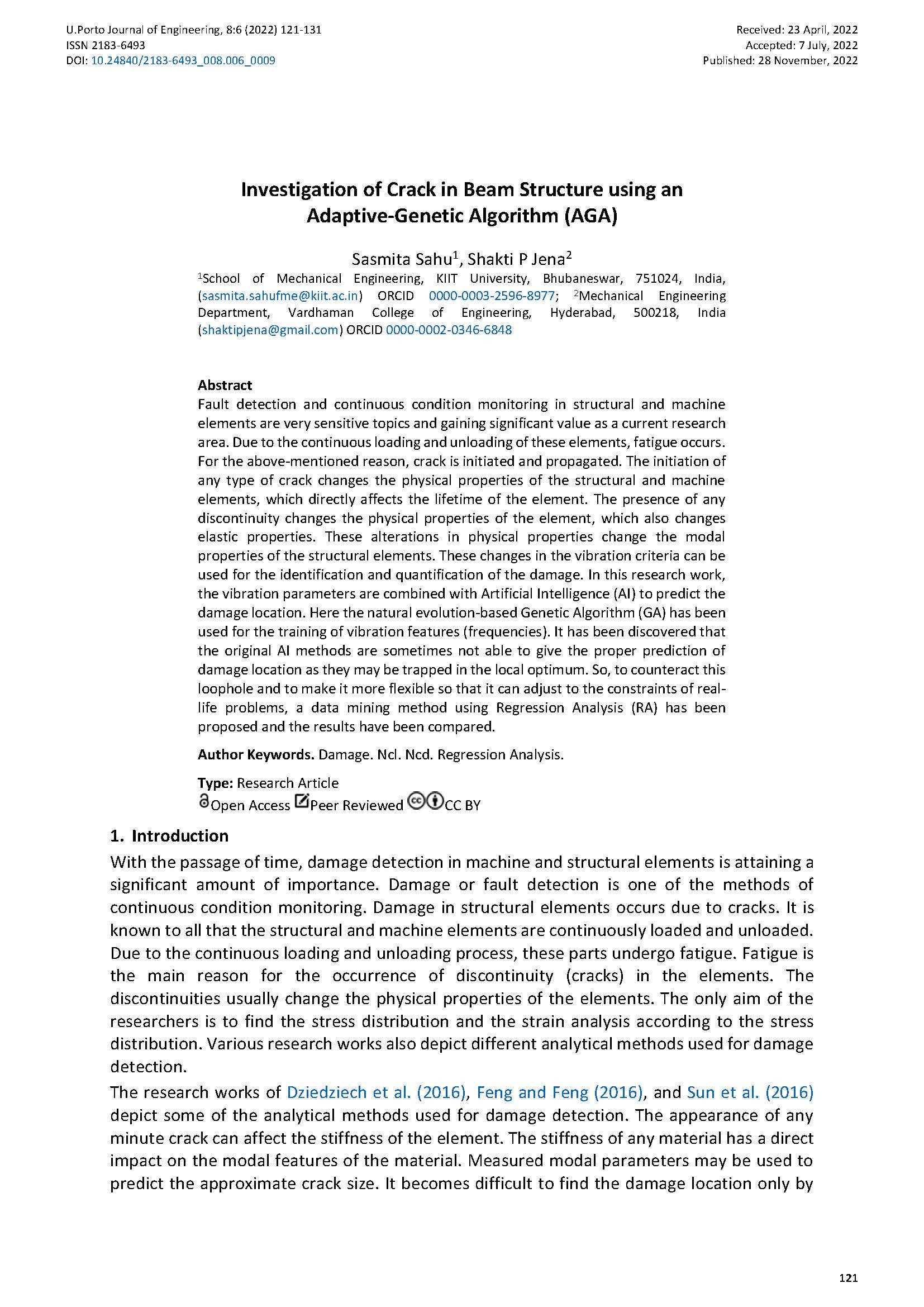Investigation of Crack in Beam Structure using an Adaptive-Genetic Algorithm (AGA)
Main Article Content
Abstract
Fault detection and continuous condition monitoring in structural and machine elements are very sensitive topics and gaining significant value as a current research area. Due to the continuous loading and unloading of these elements, fatigue occurs. For the above-mentioned reason, crack is initiated and propagated. The initiation of any type of crack changes the physical properties of the structural and machine elements, which directly affects the lifetime of the element. The presence of any discontinuity changes the physical properties of the element, which also changes elastic properties. These alterations in physical properties change the modal properties of the structural elements. These changes in the vibration criteria can be used for the identification and quantification of the damage. In this research work, the vibration parameters are combined with Artificial Intelligence (AI) to predict the damage location. Here the natural evolution-based Genetic Algorithm (GA) has been used for the training of vibration features (frequencies). It has been discovered that the original AI methods are sometimes not able to give the proper prediction of damage location as they may be trapped in the local optimum. So, to counteract this loophole and to make it more flexible so that it can adjust to the constraints of real-life problems, a data mining method using Regression Analysis (RA) has been proposed and the results have been compared.
Downloads
Article Details

This work is licensed under a Creative Commons Attribution 4.0 International License.
Authors who publish with this journal agree to the following terms:
- Authors retain copyright and grant the journal right of first publication with the work simultaneously licensed under a Creative Commons Attribution License that allows others to share the work with an acknowledgement of the work's authorship and initial publication in this journal.
- Authors grant the journal the rights to provide the article in all forms and media so the article can be used on the latest technology even after publication and ensure its long-term preservation.
- Authors are able to enter into separate, additional contractual arrangements for the non-exclusive distribution of the journal's published version of the work (e.g., post it to an institutional repository or publish it in a book), with an acknowledgement of its initial publication in this journal.
- Authors are permitted and encouraged to post their work online (e.g., in institutional repositories or on their website) prior to and during the submission process, as it can lead to productive exchanges, as well as earlier and greater citation of published work (See The Effect of Open Access).

